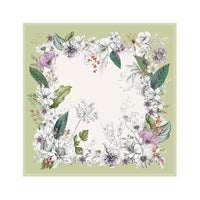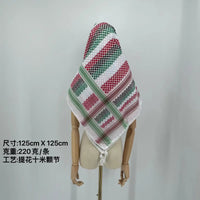Can Anyone Wear a Keffiyeh?
The keffiyeh, a traditional Middle Eastern headdress, has become a symbol of Palestinian identity and resistance. With its distinctive checkered pattern, it is now recognized globally. But can anyone wear a keffiyeh? This question often arises, especially in the context of cultural appropriation and solidarity. In this article, we will explore the historical significance of the keffiyeh, its cultural symbolism, and the considerations non-Arabs should keep in mind when wearing it.
The Historical Significance of the Keffiyeh
The keffiyeh, also known as kufiya, ghutra, shemagh, or hatta, originated in the Middle East as a practical garment. It was traditionally worn by farmers and nomadic Bedouins to protect against the harsh desert sun and sand. The keffiyeh is typically made from a square piece of cotton fabric, folded and wrapped around the head, often secured with an agal, a black cord.

The Evolution into a Symbol of Identity
Over time, the keffiyeh evolved from a practical garment to a potent symbol of Palestinian identity and resistance. During the Arab Revolt of the 1930s against British colonial rule, Palestinians from all walks of life adopted the keffiyeh as a symbol of national unity. The black and white checkered keffiyeh became particularly associated with the Palestinian cause, especially through its prominent use by leaders like Yasser Arafat.
Cultural Significance and Symbolism
The keffiyeh is more than just a piece of cloth; it carries deep cultural and political significance. For Palestinians, it symbolizes sovereignty, resistance, and solidarity. The patterns woven into the keffiyeh often reflect aspects of Palestinian heritage, such as olive trees and fishnets, further embedding it within the cultural identity.
Wearing the Keffiyeh as a Non-Arab
When non-Arabs wear the keffiyeh, it can be seen in different lights. On one hand, it can be viewed as a form of solidarity with the Palestinian cause. Many Palestinians appreciate seeing their cultural symbols embraced by others as a sign of support. On the other hand, wearing the keffiyeh without understanding its significance or merely as a fashion statement can be considered cultural appropriation.

Guidelines for Wearing a Keffiyeh Respectfully
If you are a non-Arab considering wearing a keffiyeh, here are some guidelines to ensure that you do so respectfully:
- Educate Yourself: Understand the history and significance of the keffiyeh. Know what it represents and why it is important to the Palestinian people.
- Show Solidarity: Wear the keffiyeh as a sign of support for the Palestinian cause. Be prepared to explain its significance if asked.
- Avoid Fashion Trends: Do not wear the keffiyeh merely because it is trendy. This can diminish its cultural and political significance.
The Debate on Cultural Appropriation
Cultural appropriation occurs when elements of a minority culture are adopted by members of a dominant culture without understanding or respecting the original context. The keffiyeh has often been at the center of such debates, especially when it is used in fashion devoid of its cultural meaning.
Conclusion
The keffiyeh is a powerful symbol of Palestinian identity and resistance, deeply rooted in history and culture. While anyone can wear a keffiyeh, it is crucial to do so with respect and understanding. By educating yourself about its significance and wearing it as a sign of solidarity, you can honor its cultural heritage and support the Palestinian cause.





